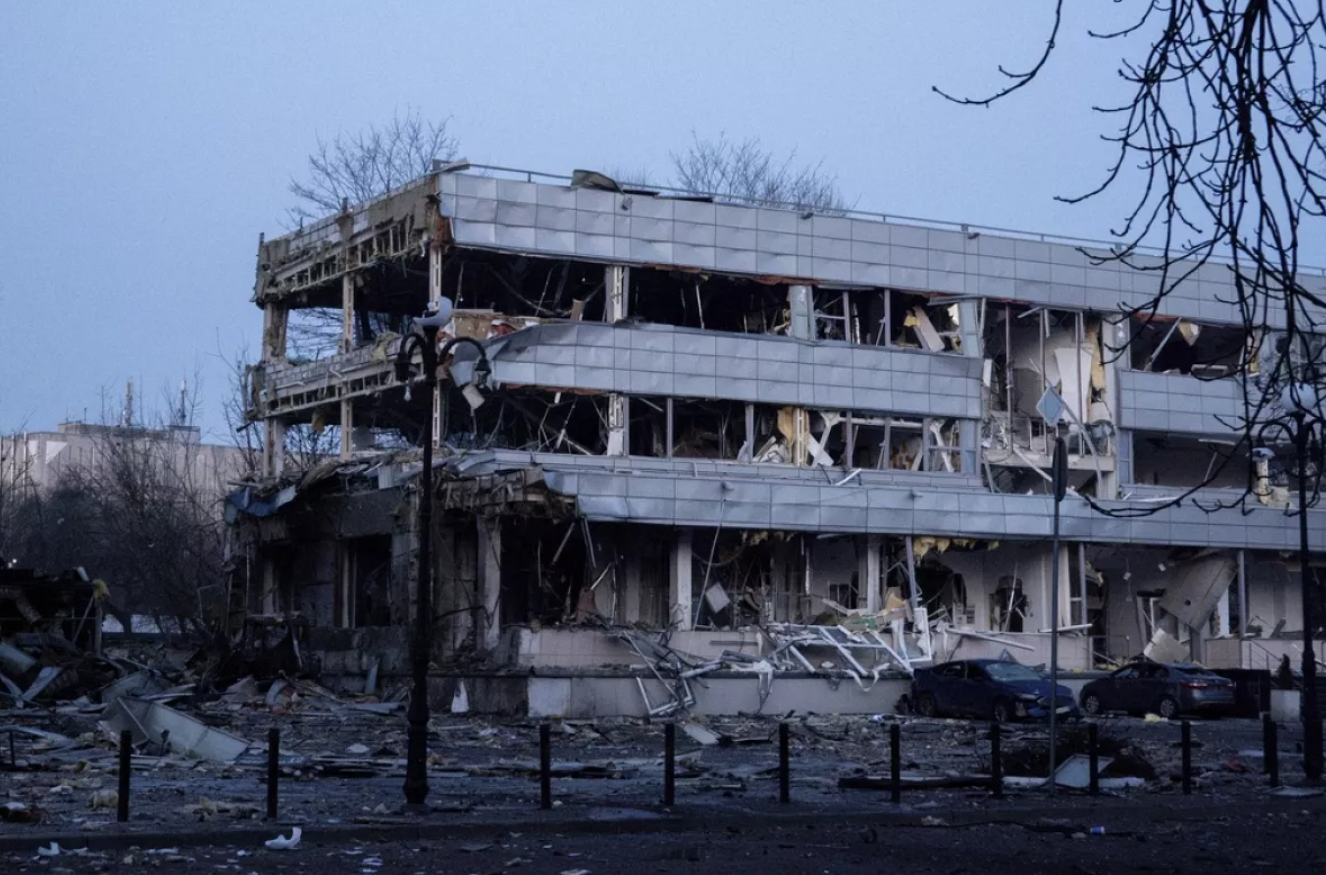
Compiled by the Initiative on GHG Accounting of War, the study uses a unique methodology to track the environmental consequences of military activity, infrastructure destruction, and conflict-induced wildfires. Endorsed by the Ukrainian government, the research aims to hold Russia accountable for its war-related emissions and the broader climate crisis it is fueling.
Co-authored by Intergovernmental Panel on Climate Change (IPCC) member Svitlana Krakovska, the findings will be presented this week at the 62nd session of the IPCC in Hangzhou, China, highlighting how armed conflict and climate change are feeding into a vicious cycle of destruction.
Wildfires Surge, Fueling Climate Breakdown
One of the most alarming findings of the report is the dramatic increase in wildfires across Ukraine in 2024. Data from the European Forest Fire Information System shows that more than 92,100 hectares of land burned over the past year—more than double the average from previous years of war.
Many of these fires were directly triggered by the war, with ignition sources ranging from artillery shelling and drone strikes to exploding mines and even soldiers lighting campfires. Because active conflict zones remain inaccessible to firefighters, these blazes often rage unchecked, consuming entire forests and carbon sinks.
According to lead author Lennard de Klerk, the Fire Weather Index—a measure of wildfire risk—was abnormally high in eastern Ukraine in 2024 due to unusually dry conditions and heatwaves. Climate change has made such extreme weather events more likely, creating a destructive feedback loop: war causes wildfires, wildfires release carbon emissions, and emissions worsen climate change, leading to even drier and hotter conditions.
Emissions from all landscape fires, including forest fires, reached 25.8 million tonnes of CO₂ equivalents in 2024—a staggering 118% increase compared to previous years of the war.
Military Operations Now the Leading Source of War-Related Emissions
While wildfires have driven a sharp increase in war emissions, direct military activity has now overtaken infrastructure destruction as the largest contributor.
- Tanks, fighter jets, and military vehicles remain the biggest polluters, burning vast amounts of diesel and kerosene. These operations alone generated 74 million tonnes of CO₂ equivalents in the past year.
- Ammunition use remains carbon-intensive, with the rise of drone warfare failing to offset emissions from traditional artillery.
- Attacks on energy infrastructure increased by 16%, with damage to oil facilities causing emissions to surge from 1.1 million tonnes over the first two years of war to 2.1 million tonnes in the past 12 months alone.
Air traffic has also contributed to the conflict's emissions footprint. With commercial airlines avoiding Russian and Ukrainian airspace, longer flight paths have added 14.4 million tonnes of CO₂ equivalents to the war's emissions tally.
Ukraine Pushes for War-Related Climate Reparations
As the war rages on, Ukraine is pushing for Russia to be held legally accountable for its climate destruction. The government is using this research to strengthen its case for environmental war reparations—a concept that is gaining traction in international legal and climate circles.
"The full-scale armed aggression against Ukraine is entering a fourth year," says Ukraine's Environment Minister Svitlana Grynchuk. "This report shows that the environmental damage knows no borders, and the war is exacerbating the climate crisis that the whole world is facing today."
She calls the study "an important document to hold Russia accountable for the harm it is causing to all of us."
The report will be presented at the UN climate science meeting in China, where researchers hope to raise global awareness of the devastating climate consequences of war. Experts warn that military emissions are often overlooked in global climate negotiations, despite their significant role in accelerating planetary warming.
War and Climate Change: A Vicious Cycle
The findings serve as a stark reminder that climate change and war are increasingly intertwined. Rising global temperatures have made extreme weather events—like heatwaves and droughts—more frequent, creating conditions that fuel conflict. At the same time, war is accelerating environmental destruction, locking the planet into a cycle of worsening climate instability.
If fighting continues at this pace, emissions will keep rising—worsening the very crisis that nations are struggling to contain.